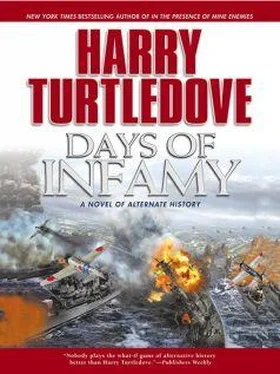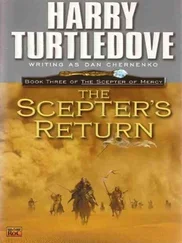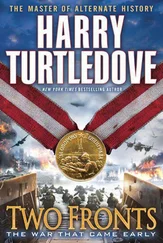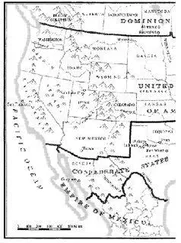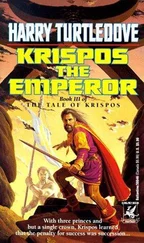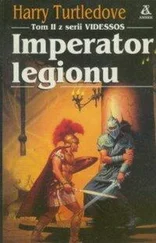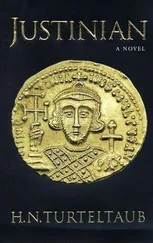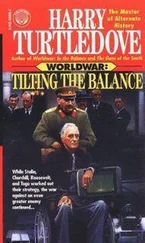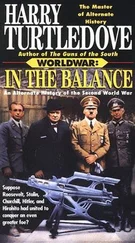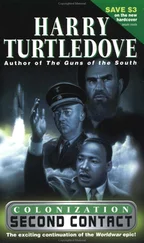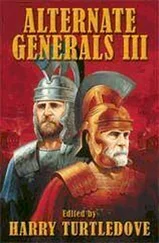Honolulu was about to get kicked in the teeth.
The place was defended. Puffs of black smoke from antiaircraft guns were already pocking the sky around the fighters Shindo led, and around the bombers flying above them. Antiaircraft guns were a nuisance. But they were only a nuisance. The Americans had next to no combat aircraft left. That was what really mattered.
Waggling his wings to the rest of the Zeros, Shindo dropped his fighter’s nose and dove on the city below. The other planes followed. Those olive-drab trucks-and the cars, and the buildings past which they drove-swelled from ant size to toy size to the real thing. Now the antiaircraft fire was above his planes. He laughed. The Yankees couldn’t depress their guns fast enough to stay with him.
As if trying to make up for that, small-arms fire reached for the Zeros. All the machine guns and rifles and pistols on the ground seemed to go off at once. Muzzle flashes and tracers sparked below Shindo. As usual, he ignored them. Odds were, all that stuff would miss him. Nobody could lead a speeding plane enough; people with small arms shot behind aircraft they aimed at. And if, by bad luck, this once they didn’t… Ground fire had already winged Shindo’s plane once. It could have been worse. But he couldn’t do anything about it one way or the other.
Come to that, he’d had to learn to shoot at ground targets. He was pretty good at it now. He didn’t know whether that truck convoy heading west through the center of town was carrying men or supplies or ammunition. He didn’t care. He shot it up any which way.
Flames exploded from some of the trucks. Gasoline, he thought. The less the Americans had, the less good they could get out of their cars and trucks and tanks. He pulled up and went around for another pass. A bullet banged through the Zero’s fuselage, about a meter behind where he sat. Sure as sure, put enough rounds in the air and some would hit. The plane kept flying. This one hadn’t hit anything important.
The truck convoy burned merrily. Soldiers scrambled out of some of the vehicles. Some of them fired into the sky. Others ran for cover. He shot up not only the convoy but as many cars on the street as he could. Now he wasn’t just aiming to impede military traffic, though he wanted to do that. His orders were to make Honolulu howl. The louder the city howled, the likelier the American commanders were to raise the white flag.
As Lieutenant Shindo pulled up, acceleration and a contemptuous grin thrust his lips back from his teeth. Japanese officers wouldn’t give a damn about how loud civilians howled. They’d fight to the last man, whatever the odds. But the Americans were soft, decadent, effeminate. They let extraneous factors like civilians affect even important things like war. Well, they would pay for it.
Shindo automatically checked six. A pilot who didn’t do that all the time would regret it. Even though he didn’t think the Americans could put any more fighters in the air, habit was unbreakable.
One of his Zeros went down. It sent a fireball and a column of black smoke up into the sky. The building it had hit was starting to burn, too. Even in death, the pilot did damage. Shindo nodded, saluting his courage. The dead man’s spirit would go to the Yasukuni-jinja-the Shrine for Establishing Peace in the Empire-at Kudan Hill in Tokyo.
The Nakajimas and Aichis that flew with the fighters were bombing the city now. What civilian terror could do, it would do. Shindo hoped it would make the Americans give up. He was an economical warrior. He didn’t believe in expending more on objectives than he had to.
Shindo spoke to his fellow fighter pilots on the all-planes circuit: “Mission accomplished. Now we return to the carriers.” They mostly weren’t landing on carrier decks any more; still, security persisted.
Oahu was so small, it made the war seem a miniature painting. Even Haleiwa airstrip, on the north coast of the island, was less than ten minutes’ flying time from Honolulu. The front wasn’t that far north of the local capital and Pearl Harbor. The gap between the Waianae Range and the Koolau Range widened from north to south, which meant the Americans had to hold a longer line and stretch themselves thinner as they fell back. Japanese soldiers might have been the best in the world at taking advantage of weak spots in the enemy’s defenses. Other armies had more in the way of heavy equipment, yes. If Japanese pilots hadn’t had complete control of the air and smashed up a lot of American heavy equipment before it got into action, this would have been a much tougher fight. But nobody could match the Japanese at infiltrating.
Shells burst on and near the roads north of the front. Sensibly, the Americans were trying to deny the Japanese the use of them. The Yankees had fought reasonably well and with considerable courage since the first crippling blows they’d suffered. But those were plenty to bury them in a deep, deep hole.
Here came Haleiwa. It had the advantage of being out of range of most American artillery. The Japanese still couldn’t use Wheeler Field. Even U.S. mortars could reach the runways south of Schofield Barracks. But the more planes and fuel and equipment the Navy ferried off the carriers and onto dry land, the sooner some of the precious big ships could be released for other duty.
Down came the Zero for a smooth landing. Not for the first time, Shindo thought how easy landing at an ordinary airstrip was compared to a carrier landing. He got out of the fighter and jumped down. Groundcrew men in khaki coveralls dragged his Zero into a revetment. One after another, the fighters that had followed him to Honolulu came in. He counted them, nodding as the last plane’s landing gear kicked up dust. He’d lost one, but no more.
He went to the command tent. Commanders Genda and Fuchida sat in front of a card table probably purloined from a Haleiwa house. The map they were examining also had to be local, for it was printed in English. It was larger and more detailed than any Japanese-language map of Oahu that Shindo had seen. He pointed. “Where did you get it?”
Minoru Genda looked up, a smile half mischievous, half bemused on his face. “From a service station,” he answered. “They give them away.”
“ Bako yaro,” Shindo said, thinking anyone had to be a stupid jerk to give away something that strategically valuable.
“How did it go?” Genda asked.
“Routine, for the most part,” Shindo answered. A stolid man, he’d described the opening day’s raids on Pearl Harbor much the same way. He went on, “We lost one fighter; I saw it go down. I don’t know if the antiaircraft got any of the bombers. And how do things look on your fancy new map?”
“They’re sending more and more sailors up from Pearl Harbor to fight in their line as infantry-trying to get some use out of them,” Mitsuo Fuchida said. “You can give a man a rifle, but that doesn’t turn him into a soldier.”
“ Hai. Honto.” Shindo bent closer to the map. English meant nothing to him, but he knew the topography of Oahu-and his superiors had already started marking up the map in Japanese. “What’s our next move? Another raid on Honolulu, or does some part of the front need special softening up…?”
OSCAR VAN DER KIRK’s parents had raised him to be polite no matter what. He paid no attention to a lot of what they’d taught him, especially the stuff they’d tried to drive home with a sledgehammer. But being-and staying-polite was part of what they were, and they’d made it part of what he was. Most of the time, it didn’t matter. If anything, it was an asset more often than not.
It handicapped him with Susie Higgins.
He rapidly figured out why she’d got divorced. He’d had trouble living with her for even a few days, and he was a hell of a lot more easygoing than most guys. What did puzzle him was how she’d got married in the first place. Oh, she was cute, and she was fun in the sack, but lots of girls were cute and fun in the sack. Who knew that better than a Waikiki beach bum?
Читать дальше
